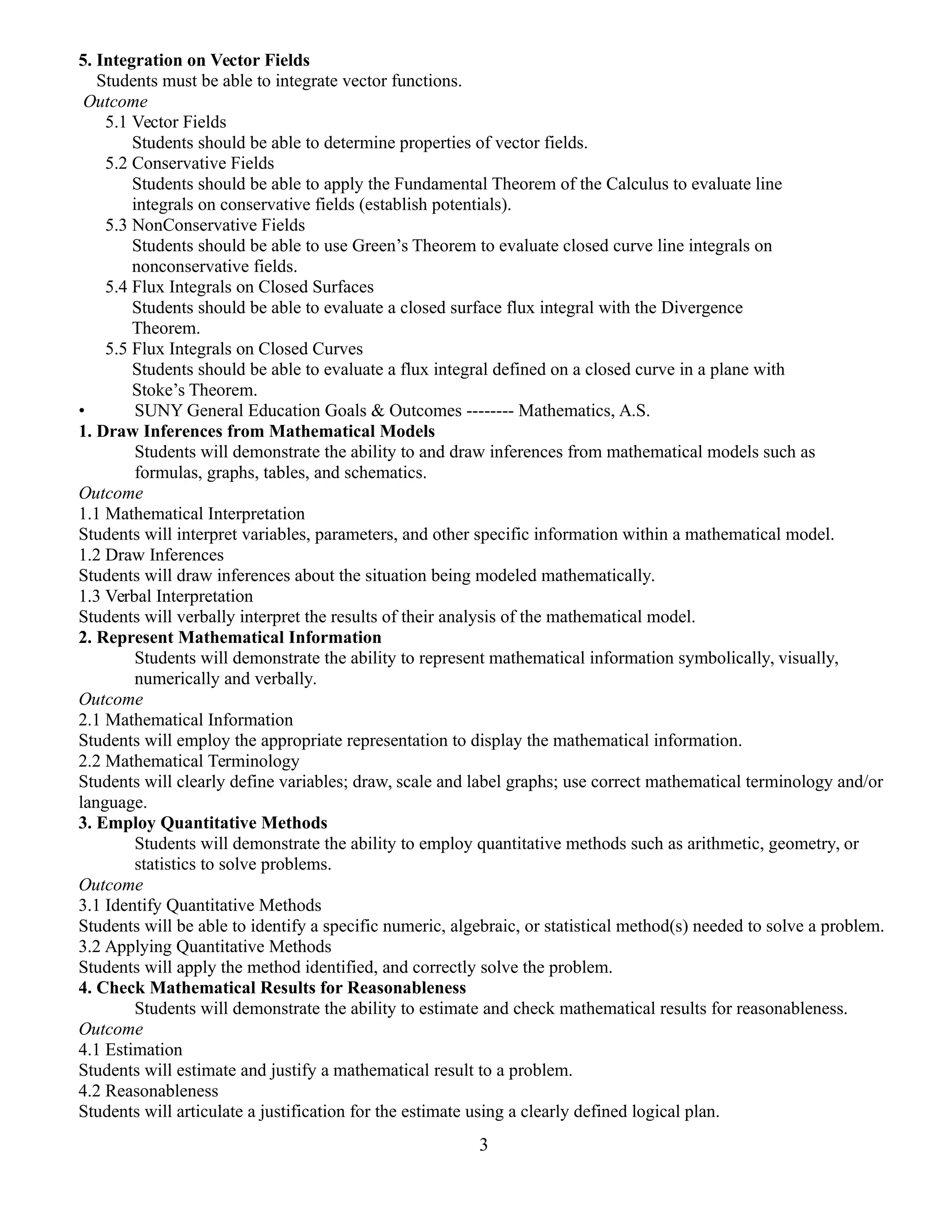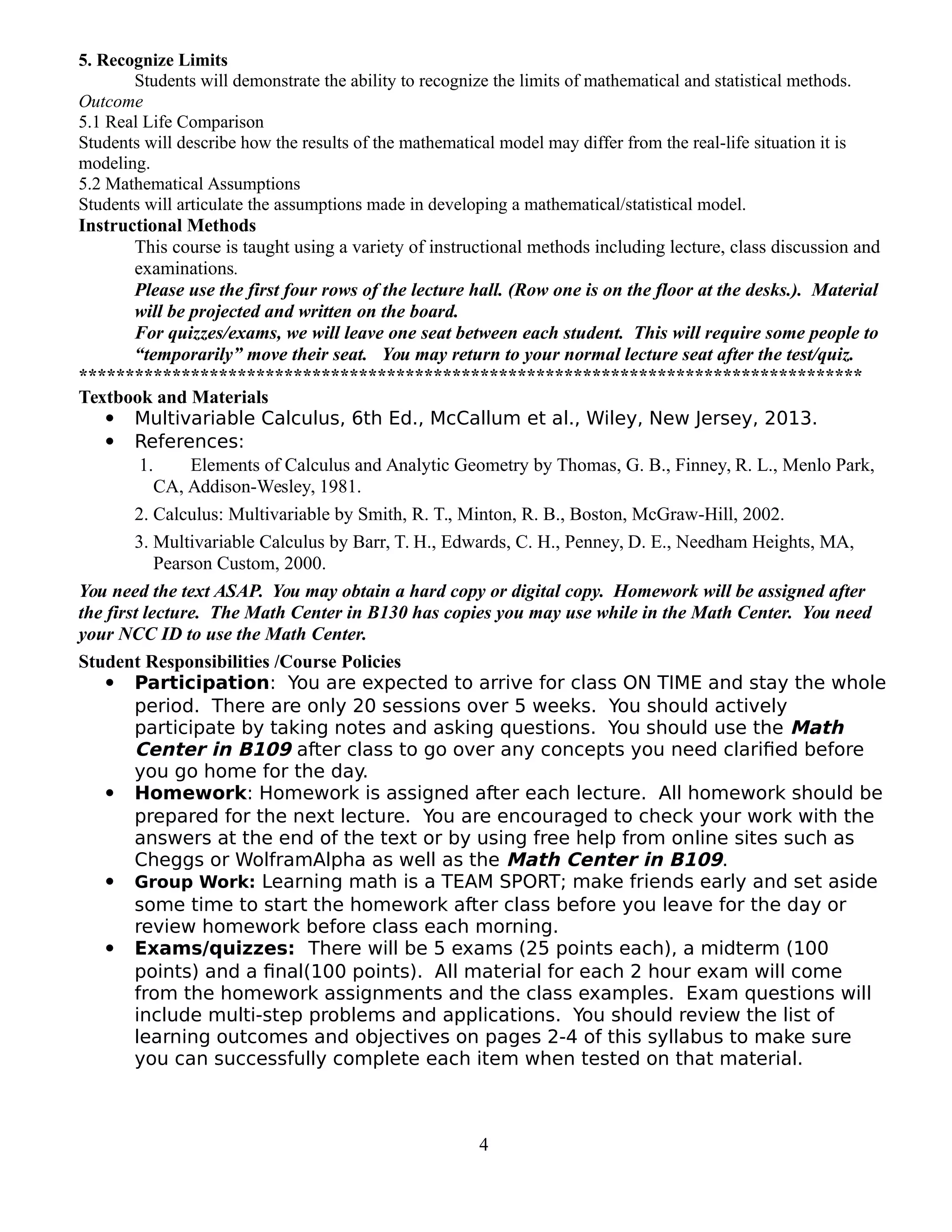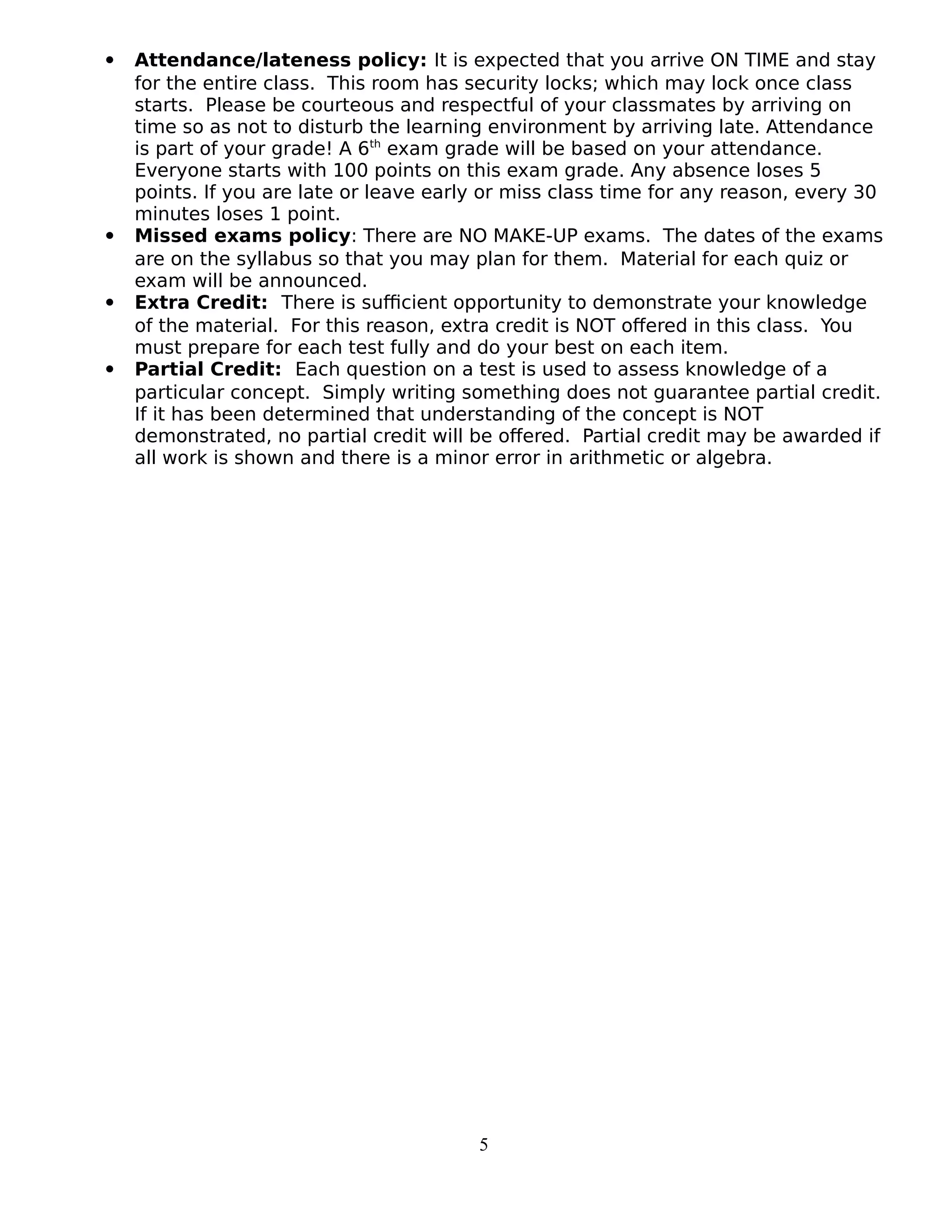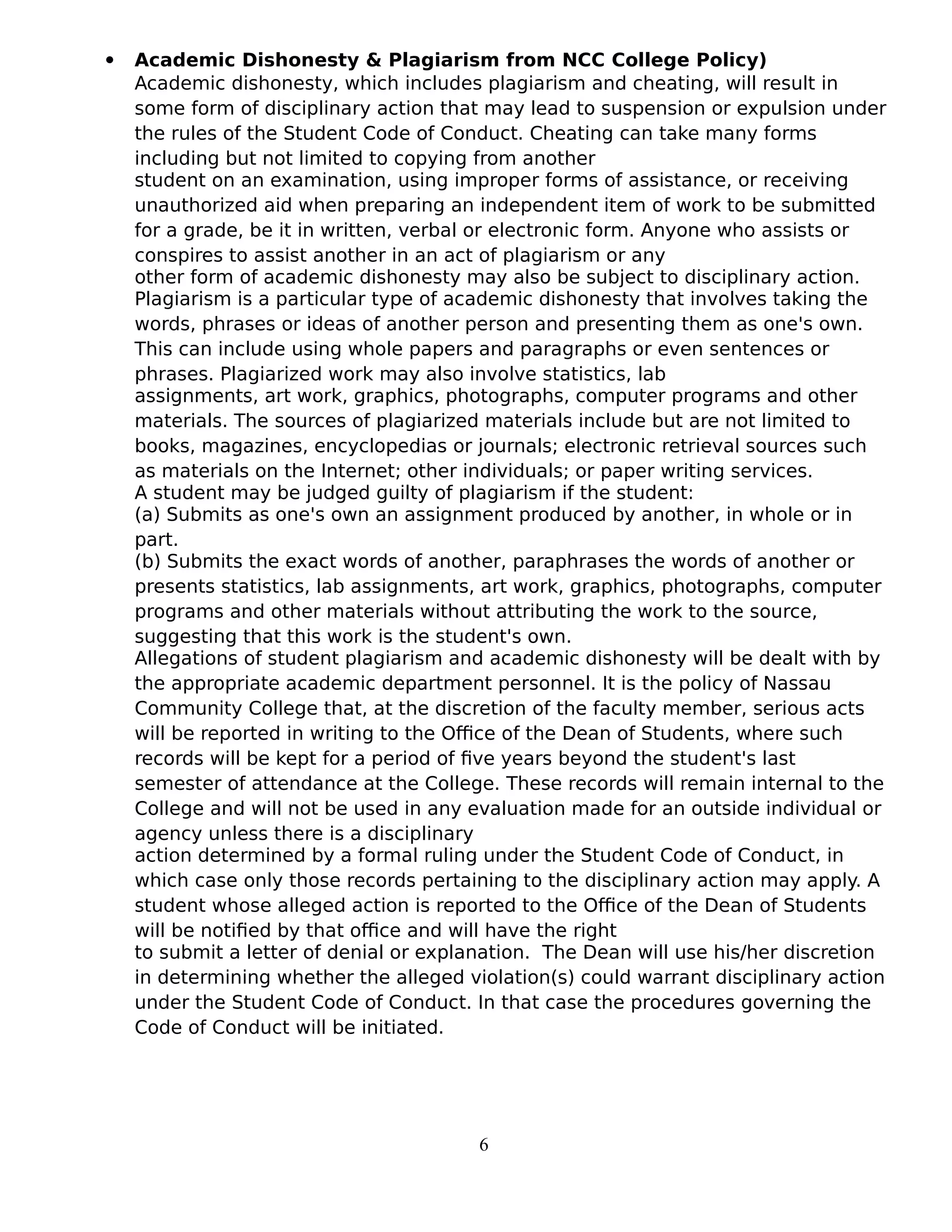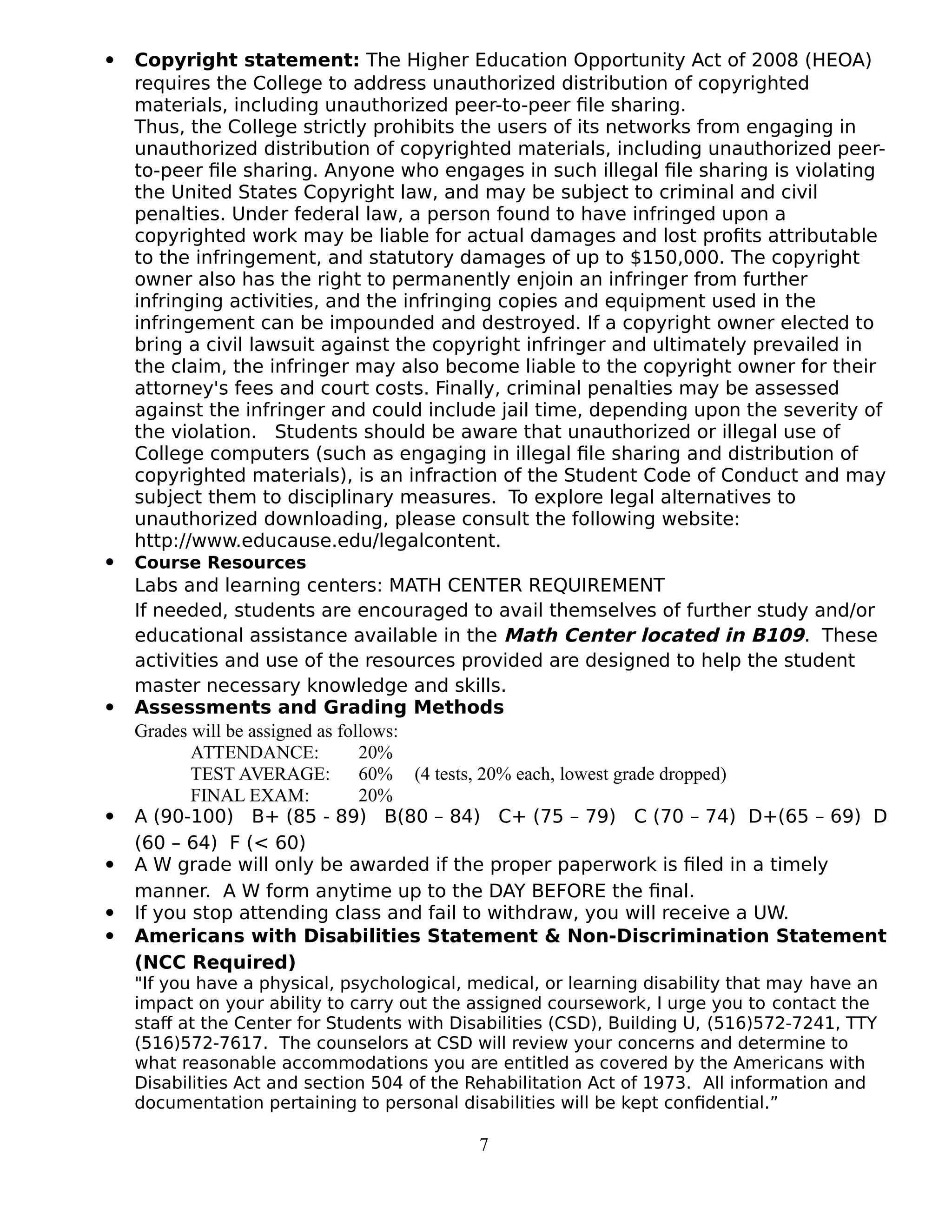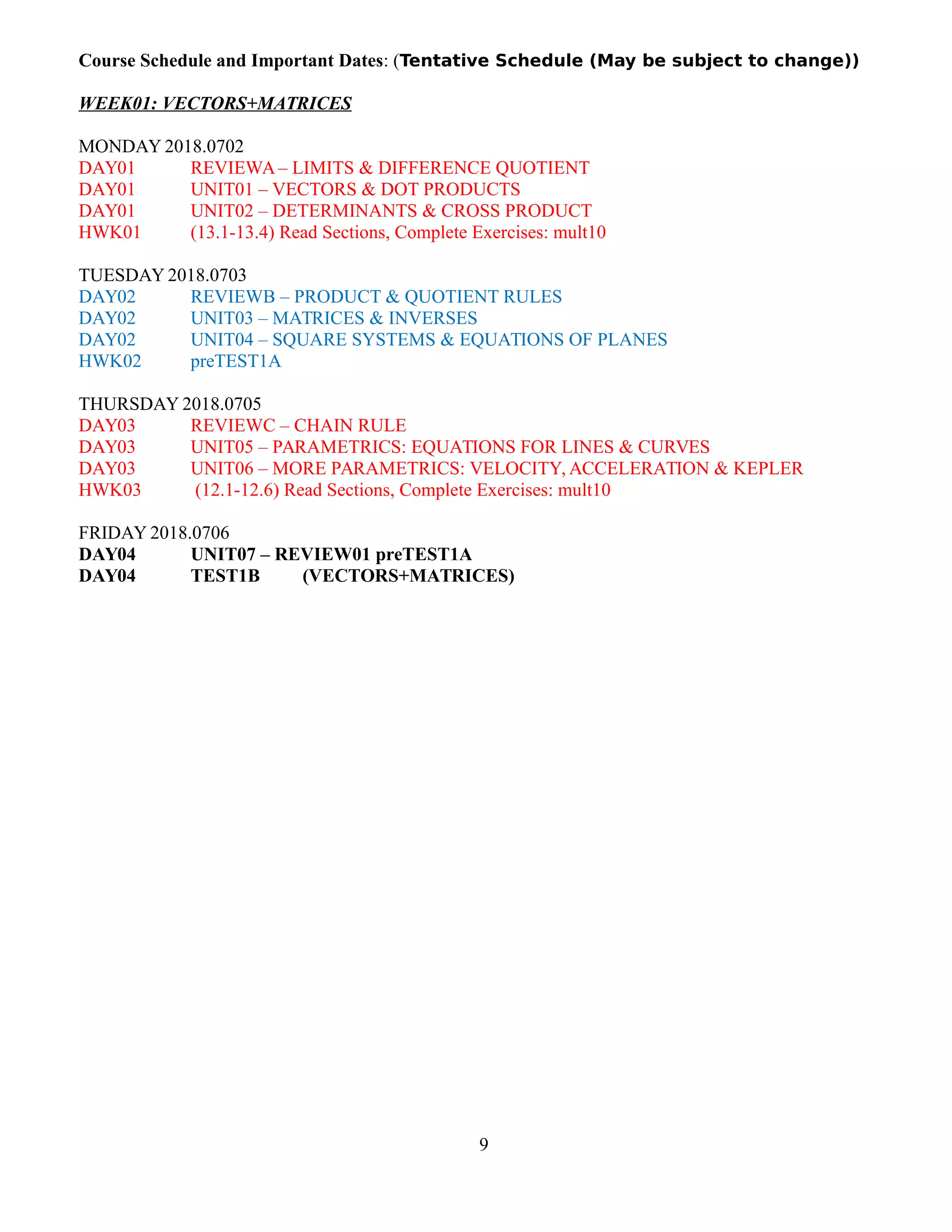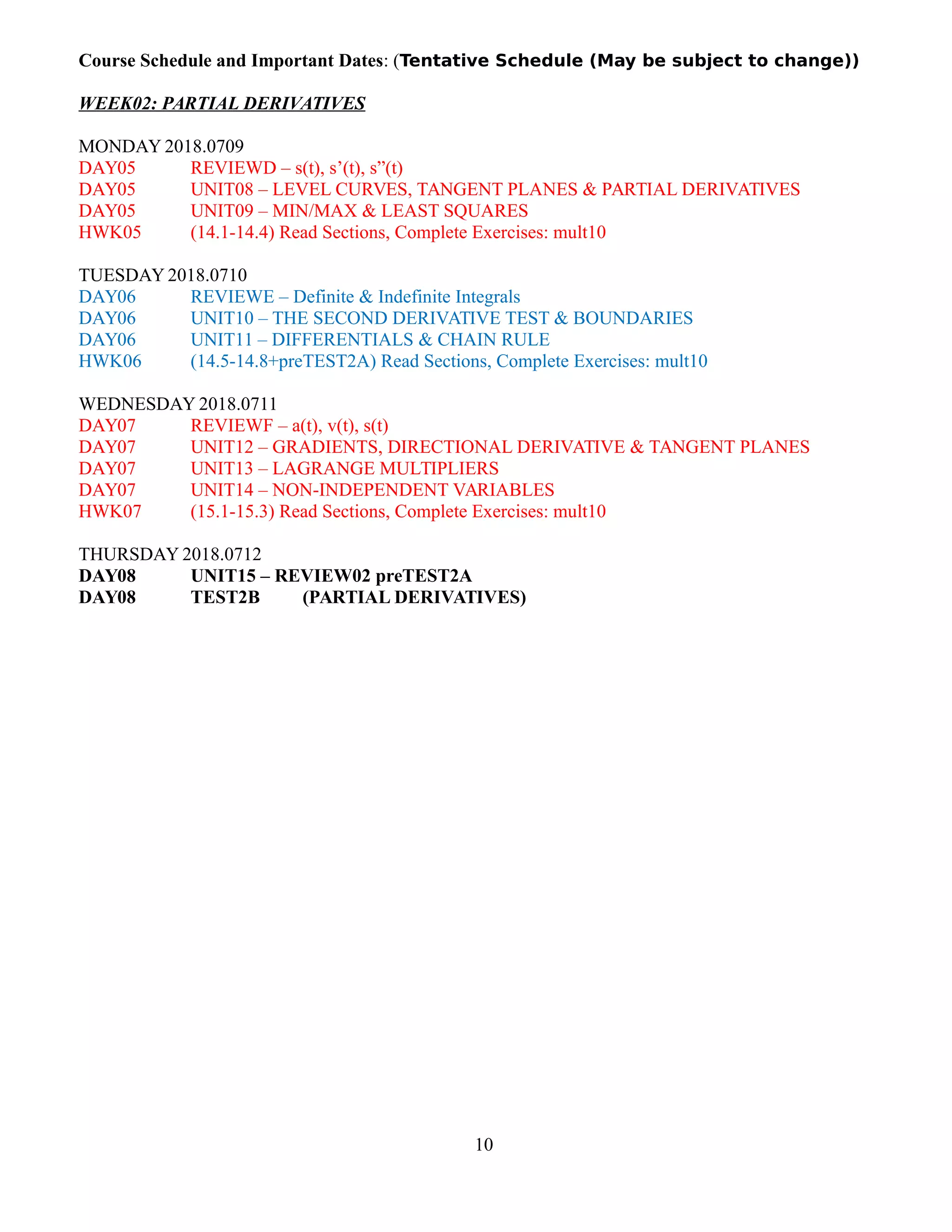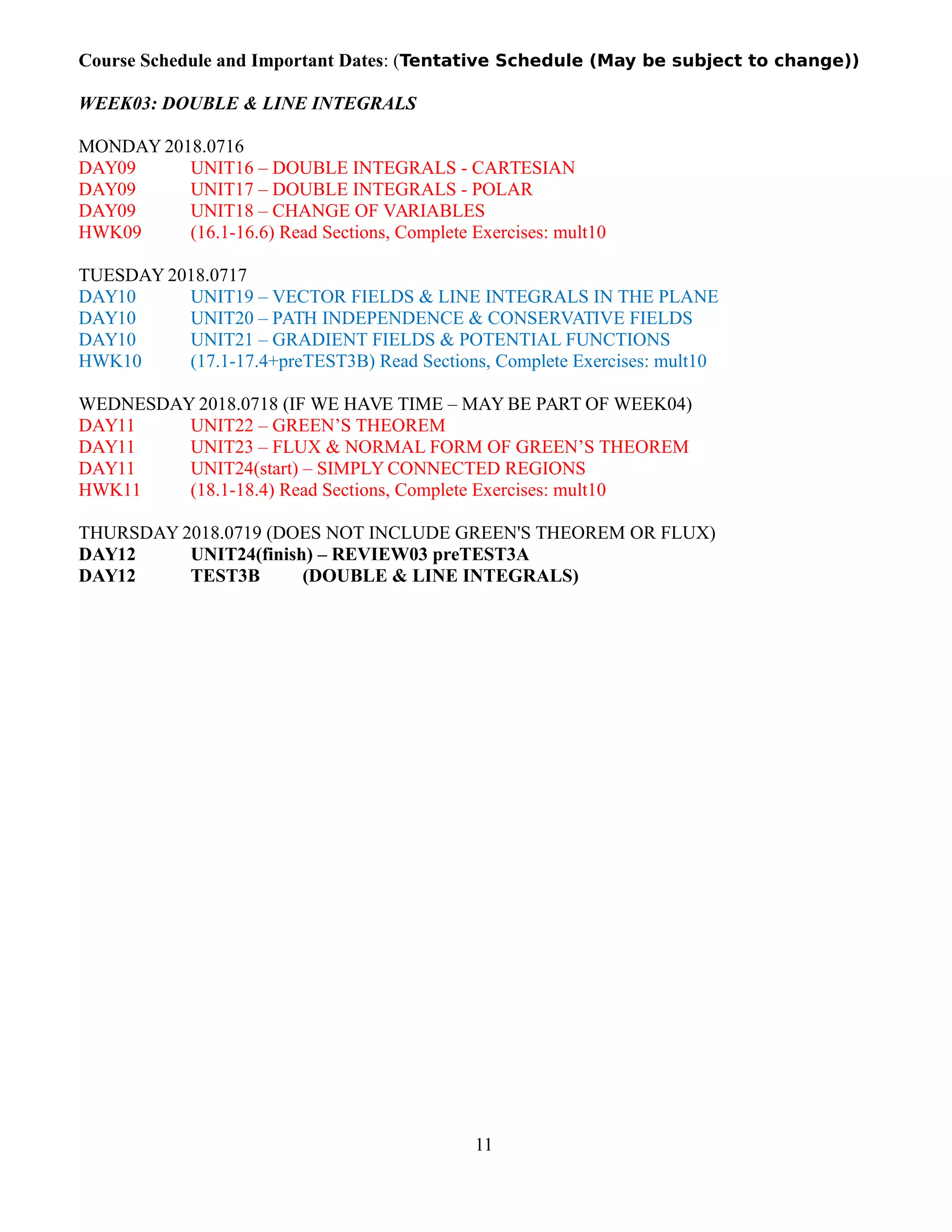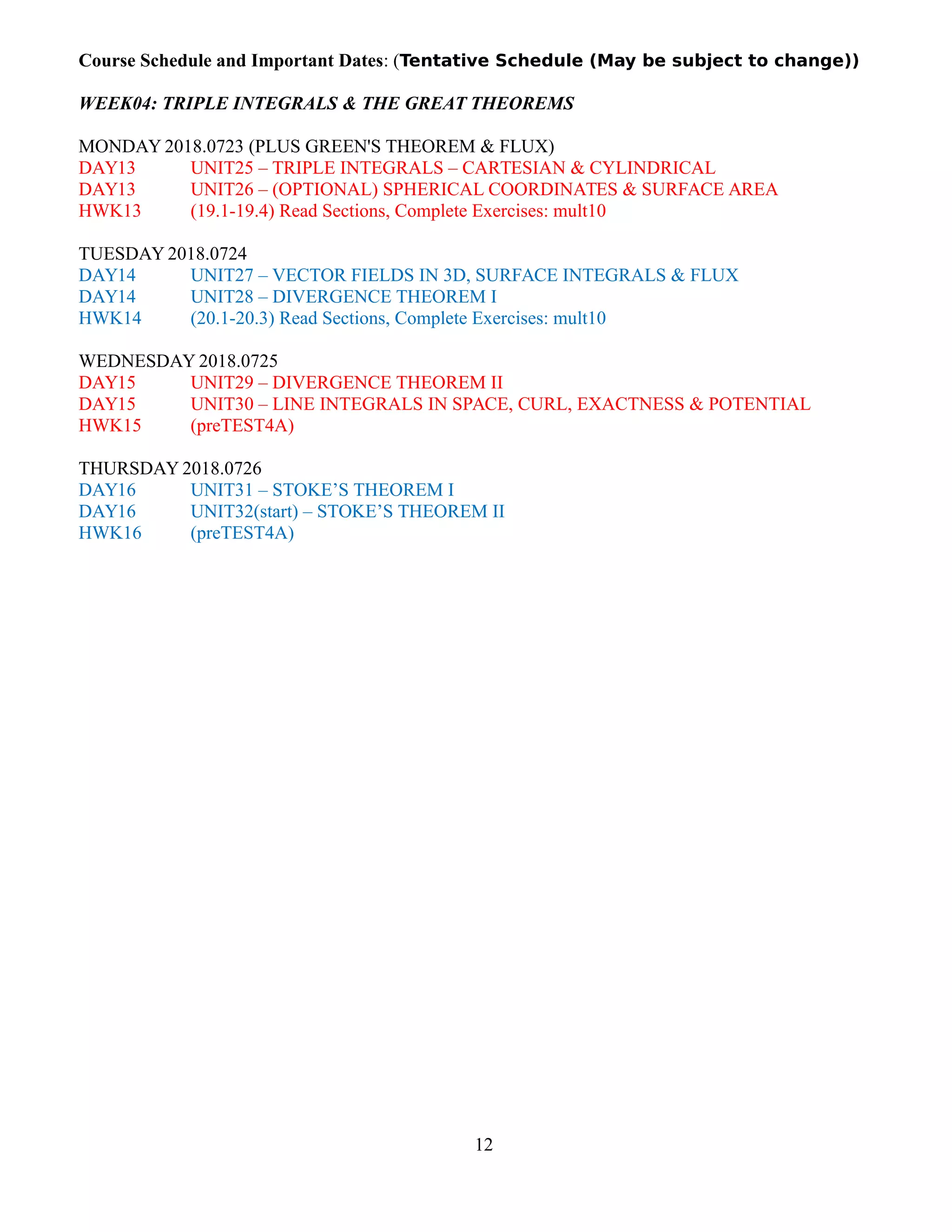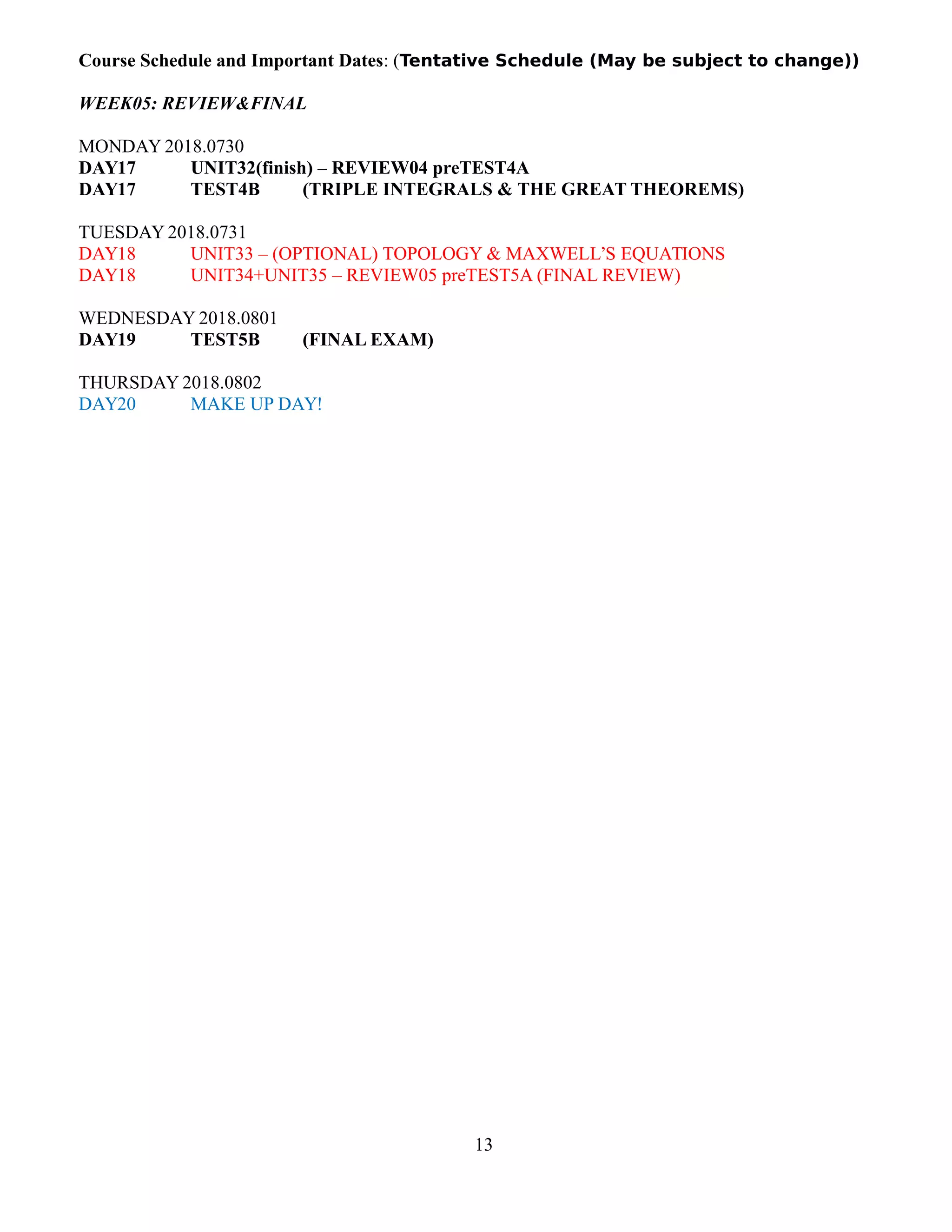This document provides a course syllabus for MAT 225 Multivariable Calculus at Nassau Community College. The key details include:
- The course meets Monday through Thursday from 6:30-9:20pm in room B218 for the summer term from July 2 to August 2.
- The instructor is Professor A. Jorge Garcia and contact information is provided.
- The course covers vectors, partial derivatives, optimization, multiple integrals, and vector calculus topics.
- Students are expected to actively participate, complete homework and group work, and there will be exams, a midterm, and final exam.
- The textbook and materials, policies on attendance, late work, academic honesty, and


